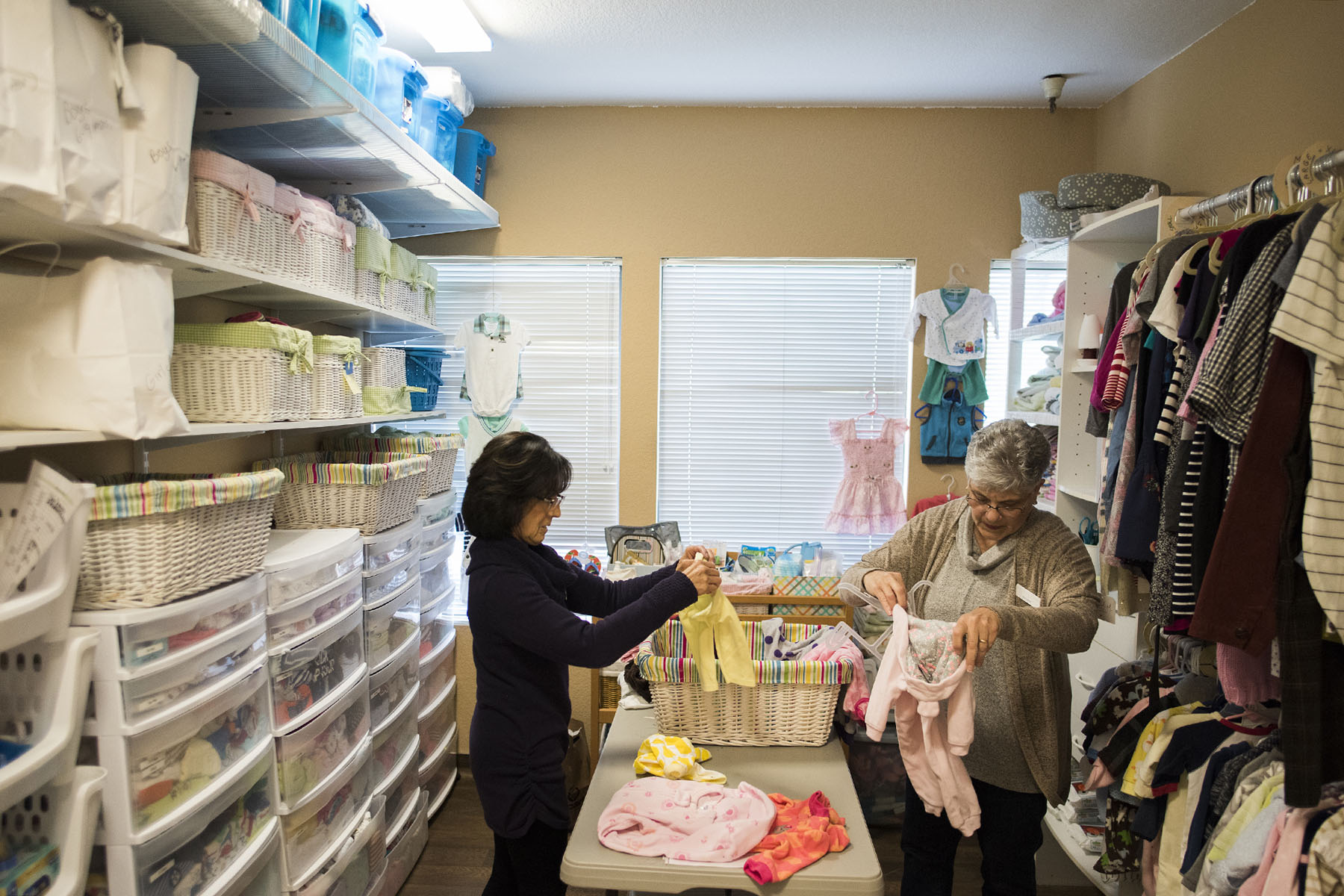Your trusted source for contextualizing abortion news. Sign up for our daily newsletter.
In the two years since Roe v. Wade’s overturn, states have increased public funding for anti-abortion centers — the non-medical facilities meant to dissuade people from terminating their pregnancies — by close to $500 million, according to a new analysis published today.
The analysis was compiled by Equity Forward, a research organization that supports abortion rights and specifically tracks anti-abortion centers, which are also known as crisis pregnancy centers. Researchers used state budget documents and legislation to track how much money has been invested in these centers since 1995, the first year they could verify public funding for them.
These facilities have become a flashpoint in the two years since Roe’s demise brought the end of federal abortion rights. They typically offer free pregnancy tests and sonograms, and some also provide parenting classes or diapers. But they are not regulated under the same standards as medical facilities and do not always employ staff health professionals.
That means those ultrasounds can be inaccurate and they can come with counseling meant to dissuade people from terminating their pregnancies. Still, in some states with abortions bans, pregnant patients — including those seeking terminations — have said such centers offer the only affordable option in their region for getting an ultrasound.
Even before the fall of Roe, these centers outnumbered abortion clinics three-to-one, according to research from the University of Georgia. Now, with abortion almost totally outlawed in 14 states and significantly restricted in several more, abortion opponents have pushed for boosting state funding for these centers. Some have tried to open new facilities in states seeing an uptick in abortion patients.
Conservative lawmakers, skittish about the political backlash associated with pushing for unpopular new bans, have heeded abortion opponents’ call to promote these centers instead. Measures expanding funding for these centers were the most common form of anti-abortion legislation promoted in state governments this year, with nine states boosting financial support, according to the Guttmacher Institute, which tracks reproductive health policy.
The new report shines light on how successful those efforts have been, painting a picture of dramatic growth in just a few years.
From 1995 to 2024, researchers found, states collectively put more than $1 billion into backing these centers. Some solely used state funds while others also repurposed federal funds allocated through the Temporary Assistance for Needy Families program. Specifically since Roe’s fall in 2022, state funding has risen: $489 million was allocated in the last two years, as 19 states poured funding into anti-abortion centers.
The largest increases are clustered in the southern states of Florida, Missouri, North Carolina, Tennessee and Texas, all of which have tight abortion restrictions. The procedure is almost entirely outlawed in Missouri, Tennessee and Texas; illegal past six weeks of pregnancy in Florida; and outlawed for people beyond 12 weeks of pregnancy in North Carolina.
According to the report, Tennessee’s publicly-funded anti-abortion program, which launched in 2021, has increased funding by more than $23 million in the past two years. North Carolina has spent about $49 million since 2013 to support anti-abortion centers; more than $33 million of that was allocated after the summer of 2022. And Texas, the largest state to ban abortion, has spent about $438 million on supporting anti-abortion centers since 2005, with close to half of that money allocated in the past two years, researchers found.
“It’s really alarming. States have chosen to take millions of dollars from comprehensive maternal health, and instead funnel money into anti-abortion centers without much oversight or accountability,” said Ashley Underwood, Equity Forward’s director.
The impact is visible, said Kathy Kleinfeld, who runs a reproductive health clinic in Houston. While her staff can no longer provide abortions, they still counsel patients about the option, including sharing which clinics in nearby states could terminate their pregnancies. For one thing, Kleinfeld said, online advertisements from anti-abortion clinics are far more common than they were a few years ago.
“They are actively, aggressively coming up on the first page, always after doing the first search for ‘abortion pill,’ or ‘abortion clinic’ — anything,” she said. “Anytime you’re searching any of those major keywords, there’s at least three to four anti-abortion centers.”
Increasingly, she has to direct her employees to warn patients who are calling around for appointments to make sure they do not go to one of those centers instead. Even if the centers can offer a visit sooner, she said, the information they provide may not be accurate.
Kleinfeld said that even prior to Roe’s overturn, she often saw patients come to her clinic with inaccurate ultrasound readings they got from one of those centers. In one case, before Texas outlawed abortion, a young woman believed she was 8 weeks pregnant — but when Kleinfeld and her staff viewed the ultrasound, they learned she was actually 20 weeks along. At the time, the state had banned abortions for anyone 20 weeks or more pregnant.
“We have this loose $438 million being funneled into these centers who are supposedly — yes they’re not providing abortion, but they’re providing education and counseling and medical services,” she said, referring to Texas’ spending. “What kind of training do these people have? And who’s overseeing them?”





